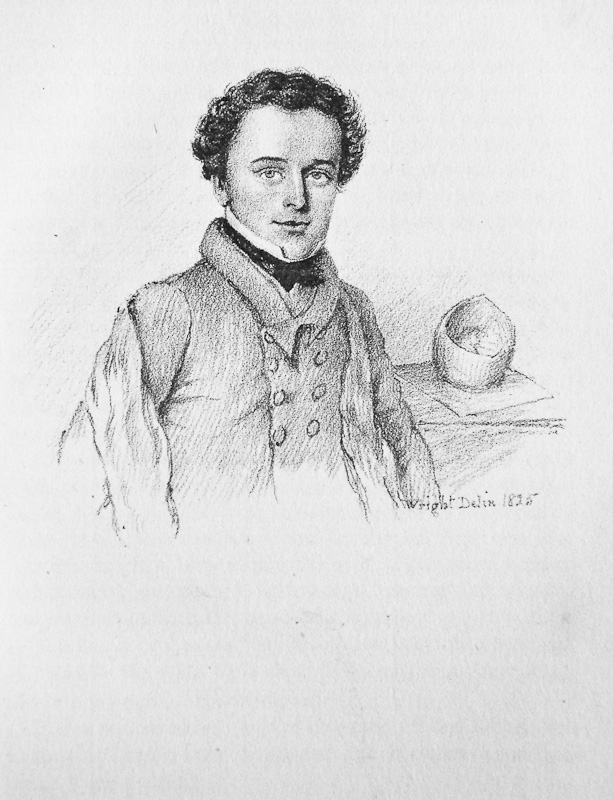Facsimile from Hawker’s manuscript of the Trelawny ballad, from Cornish Ballads & Other Poems.
THE SONG OF THE WESTERN MEN
A good sword and a trusty hand!
A merry heart and true!
King James’s men shall understand
What Cornish lads can do!
And have they fixed the where and when?
And shall Trelawny die?
Here’s twenty thousand Cornish men
Will know the reason why!
Out spake their Captain brave and bold:
A merry wight was he:-
“If London Tower was Michael’s hold,
We’d set Trelawny free!
“We’ll cross the Tamar, land to land:
The Severn is no stay:
With ‘one and all,’ and hand in hand;
And who shall bid us nay?
“And when we come to London Wall,
A pleasant sight to view,
Come forth! come forth! ye cowards all:
Here’s men as good as you.
“Trelawny he’s in keep and hold:
Trelawny he may die:
But here’s twenty thousand Cornish bold
Will know the reason why!”
Hawker was in his early twenties and a newly-married undergraduate at Oxford when he wrote ‘The Song of the Western Men’ in 1825, while staying with his wife, Charlotte, in a cottage on the southern boundary of Morwenstow parish. (See Cornish Ballads and Other Poems, p.2. for this date. In Life and Letters, p. 23, Hawker gives the year as 1824).
C. E. Byles’s editorial note on the history of the poem, in Cornish Ballads and Other Poems, reads as follows:
‘This song was first printed in a local newspaper – The Royal Devonport Telegraph and Plymouth Chronicle – dated September 2, 1826, without any indication of authorship. In 1827, it was published in The Gentleman’s Magazine (XCVII., ii., 409) as a contribution from Davies Gilbert, President of the Royal Society. The ownership of the ballad was first publicly claimed by Mr. Hawker in Records of the Western Shore, 1832, pp. 54-6. It has been the subject of much literary controversy, in which the late J. Eglinton Bailey, Dr. Brushfield, and others have upheld Mr. Hawker’s claim to originality against the counter-assertions of less competent authorities. It was set to music by Miss Louisa T. Clare in 1861. The text here given is from a manuscript in Hawker’s own hand, written for a friend on 2nd February, 1862. It is practically identical with that in his own edition of Cornish Ballads published in 1869.’
* * * * *
‘Trelawny’ is often referred to as the unofficial Cornish national anthem, although there are some other contenders for the title. Click on the links below to listen to it being sung:
– ‘Trelawny’ being sung in Helston on Flora day 2008.
– ‘Trelawny’ sung in Cornish with English subtitles.
* * * * *
In a letter written to a friend in 1855, Hawker refers to Charlotte, as ‘My wife, who knows all music, I believe, that was ever published’. Despite their financial difficulties he managed to purchase a piano for her, paid for by installments (Life and Letters p. 217). Writing to Miss Louisa Clare in 1862, only a year before Charlotte’s death, he assures her that ‘…your Trelawny music is by all appreciated and admired. My Ballad was sung to your Notes last night, at a concert in Kilhampton, by Mr. Thynne, the Rector, as you will see by the inclosed programme. He rehearsed it here at Mrs. Hawker’s Piano a few days ago, & gratified us exceedingly…’ (p.269).
Portrait of Bishop Trelawny (1650 – 1721) from Cornish Ballads & Other Poems.
* * * * *
The full text of Hawker’s own note on the poem, published in Cornish Ballads and Other Poems, reads:
With the exception of the choral lines,
‘And shall Trelawny die?
Here’s twenty thousand Cornish men
Will know the reason why!’
and which have been, ever since the imprisonment by James the Second of the of the seven bishops – one of them Sir Jonathan Trelawny – a popular proverb throughout Cornwall, the whole of this song was composed by me in the year 1825. I wrote it under a stag-horned oak in Sir Beville’s walk in Stowe Wood. It was sent by me anonymously to a Plymouth paper, and there it attracted the notice of Mr. Davies Gilbert, who reprinted it at his private press at Eastbourne under the avowed impression that it was the original ballad. It had the good fortune to win the eulogy of Sir Walter Scott, who also deemed it to be an ancient song. It was praised under the same persuasion by Lord Macaulay and by Mr. Dickens, who inserted it at first as of genuine antiquity in his Household Words, but who afterwards acknowledged its actual paternity in the same publication.
Although Hawker himself connects the original refrain of the song to the events of 1688, C. E. Byles, writing in The Life and Letters of R. S. Hawker, pp. 29-31, provides information relating to an earlier incident, which took place on 13 May 1627, when John Trelawny, grandfather of Bishop Jonathan and one of the leaders of the King’s party in Cornwall, was committed to the Tower by the House of Commons, for ‘certain offences against the liberty of free election’ and ‘contempt of the House’. He was held for about a month before being released by the King and created a Baronet, and it seems likely therefore that the chorus, around which Hawker wove his own ballad, may well date from at least 1627.
Text © Angela Williams 2010, 2011


